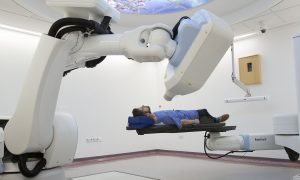Overview
Testicular cancer is a type of cancer that develops in the testicles, the male reproductive organs responsible for producing sperm and testosterone. It is relatively rare compared to other cancers, but it is the most common cancer in males aged 15 to 35. The condition is highly treatable, especially when detected early, making awareness and regular self-examinations crucial.
The effects of testicular cancer vary based on the stage at which it is diagnosed. In its early stages, it often presents as a painless lump or swelling in the testicle. Some men may experience discomfort or a heavy feeling in the scrotum, or changes in the size or texture of a testicle. If left untreated, the cancer can spread to other parts of the body, such as the lymph nodes, lungs, or abdomen, leading to more severe symptoms like back pain, chest pain, or difficulty breathing.
Treatment for testicular cancer typically depends on the type and stage of the disease. Surgery to remove the affected testicle, known as an orchiectomy, is usually the first step. In some cases, further treatment such as chemotherapy or radiation therapy may be required to destroy remaining cancer cells or prevent recurrence. Advanced cases may involve additional surgeries or targeted therapies.
The prognosis for testicular cancer is excellent, with survival rates exceeding 95% for early-stage diagnoses. Even in advanced stages, advancements in treatment have significantly improved outcomes. Regular check-ups and self-examinations are key to early detection, ensuring better chances of a full recovery and preserving long-term health.
Table of Contents
When to See a Doctor
Early detection of testicular cancer greatly increases the chances of successful treatment. It is important to consult a medical professional if you notice any unusual changes or symptoms that may indicate the condition.
Signs to see a doctor:
- Presence of a lump or swelling. If you detect a lump, swelling, or any unusual firmness in one or both testicles during a self-examination, it’s essential to have it evaluated promptly.
- Persistent discomfort or pain. Ongoing pain or discomfort in the testicles, scrotum, or lower abdomen should not be ignored, even if it is mild.
- Changes in size or texture. A noticeable change in the size, shape, or texture of a testicle, especially if it feels harder or heavier than usual, is a reason to see a doctor.
- Unexplained back pain or abdominal swelling. Pain in the lower back or swelling in the abdominal area may indicate that the cancer has spread and requires immediate medical attention.
- History of undescended testicles or family history of testicular cancer. Men with these risk factors should be especially vigilant and consult a medical professional for regular screenings or if any abnormalities arise.
Prompt medical evaluation can lead to early detection, improving the chances of successful treatment and reducing the risk of complications. Regular self-examinations and awareness of your body’s normal appearance and feel are critical in identifying potential concerns early.
What Type of Doctor to Seek
If you notice any unusual changes or symptoms in your testicles, your first step should be to consult a primary care physician or a urologist. Urologists specialize in conditions of the male reproductive system and urinary tract and are well-equipped to evaluate potential concerns like lumps or swelling in the testicles. They may conduct physical examinations and recommend further diagnostic tests, such as ultrasound imaging or blood tests for tumor markers.
If testicular cancer is diagnosed or suspected, you will likely be referred to an oncologist, a doctor specializing in cancer treatment. A medical oncologist manages chemotherapy and other systemic treatments, while a surgical oncologist may perform procedures like orchiectomy (removal of the affected testicle). In many cases, a team of specialists, including radiologists and radiation oncologists, works together to develop a comprehensive treatment plan tailored to your condition.
What to Expect from Your Visit to a Doctor
When visiting a doctor for concerns about testicular cancer, the process typically begins with a detailed discussion of your symptoms, medical history, and any risk factors, such as a family history of testicular cancer or previous issues with undescended testicles. The doctor will perform a physical examination of the testicles and scrotum to check for lumps, swelling, or other abnormalities.
If an abnormality is detected, the doctor may recommend further diagnostic tests, such as an ultrasound to get a clearer view of the testicles or blood tests to check for tumor markers like alpha-fetoprotein (AFP) or human chorionic gonadotropin (hCG). Based on the findings, the doctor will discuss the next steps, which may include additional imaging, biopsy, or a referral to a specialist for further evaluation and treatment. Open communication during this visit is essential, so be prepared to ask questions and share all relevant information about your symptoms.
Testicular Cancer Treatment Options

Image Source: www.dailymail.co.uk
Testicular cancer is highly treatable, especially when detected in its early stages. The choice of treatment depends on the type and stage of the cancer, as well as the patient’s overall health. Below are the most common treatment options used to manage and eliminate testicular cancer.
- Orchiectomy. Orchiectomy is a surgical procedure in which the affected testicle is removed. It is the primary treatment for testicular cancer because it effectively eliminates the main source of the cancer with minimal complications compared to other treatments. Most patients recover well and maintain normal hormone levels with the remaining testicle.
- Chemotherapy. For more advanced cases or when there is a risk of remaining cancer cells after surgery, chemotherapy is often used. This treatment involves administering drugs orally or intravenously to kill cancer cells throughout the body. Chemotherapy is also effective in preventing recurrence and treating cancer that has spread to other areas.
- Radiotherapy. Radiation therapy is another common treatment for testicular cancer, particularly for seminomas, a specific type of testicular tumor. This method uses high-energy X-rays or other radiation to destroy cancer cells. It is often used in combination with surgery to target any remaining cancer cells and reduce the risk of recurrence.
Testicular cancer has an excellent prognosis, with a high cure rate for most patients, especially when treated early. Even if one testicle is removed, the remaining testicle typically produces sufficient testosterone and sperm for fertility. However, in cases where fertility is a concern, sperm banking can be considered before treatment begins. The advancements in testicular cancer treatment continue to improve outcomes and quality of life for patients.
Testicular Cancer Prognosis
The prognosis for testicular cancer is generally excellent, with high survival rates, especially when detected early. Different treatment options contribute to this positive outlook in distinct ways. Here’s what to expect from each approach:
- Orchiectomy. As the primary treatment, orchiectomy has an excellent prognosis for early-stage testicular cancer. Removing the affected testicle often eliminates the cancer entirely, with minimal risk of complications or recurrence. Most patients experience a full recovery and maintain normal hormonal and reproductive function.
- Chemotherapy. Chemotherapy is highly effective for advanced testicular cancer or when cancer has spread to other areas of the body. It significantly improves survival rates, even in cases of metastatic cancer. While side effects can be challenging, they are usually temporary, and many patients achieve long-term remission.
- Radiotherapy. Radiotherapy offers a favorable prognosis for seminoma-type testicular cancer, particularly when used after surgery. It effectively targets residual cancer cells, reducing the likelihood of recurrence. For localized cancer, radiotherapy is often curative, with a high success rate.
Testicular cancer remains one of the most treatable cancers, with five-year survival rates exceeding 95% for most patients. Early detection, appropriate treatment, and advancements in medical care continue to enhance outcomes, giving patients a strong chance of a full recovery and a healthy life.


